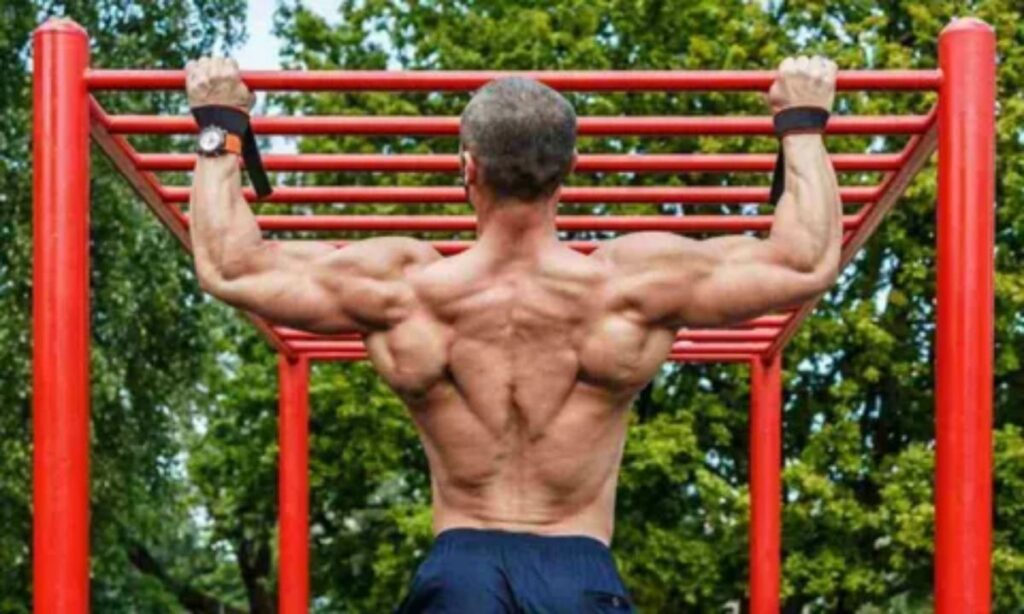Calisthenics is a form of bodyweight training that requires no equipment and can be performed anywhere, making it an ideal workout for those looking to build strength and endurance at home. This type of training focuses on natural movements such as pushing, pulling, squatting, and core engagement, leading to a well-balanced, lean, and powerful physique.
Unlike traditional weightlifting, calisthenics promotes functional fitness, flexibility, and overall athleticism. With dedication and consistency, anyone can achieve impressive results without stepping into a gym. Whether you are a beginner or an advanced athlete, calisthenics provides endless possibilities to challenge and improve your body.
Essential Calisthenics Exercises
Calisthenics relies on bodyweight movements to build strength, endurance, and flexibility. Essential exercises include push-ups for upper body power, pull-ups for back and arm strength, and squats for lower body development. Core-focused moves like planks and leg raises improve stability and control. Mastering these fundamentals creates a solid foundation for advanced calisthenics skills.
Upper Body Strength
Developing a strong upper body is crucial for building a powerful physique. Push-ups are one of the most fundamental exercises, working the chest, shoulders, and triceps. Variations like diamond push-ups, archer push-ups, and pseudo-planche push-ups can increase intensity. Pull-ups and chin-ups are excellent for strengthening the back and biceps, while dips help build powerful triceps and shoulders.
Core Development
A strong core is the foundation of a well-balanced physique. Exercises like planks, leg raises, and hanging knee tucks effectively engage the abdominal muscles. Advanced movements such as dragon flags and L-sits add extra difficulty, improving core stability and control. Strengthening the core enhances overall athletic performance and prevents injuries.
The Fundamentals of Calisthenics
What is Calisthenics?
Calisthenics is a form of strength training that uses body weight as resistance to build muscle, endurance, and flexibility. The exercises involve multi-joint movements that engage multiple muscle groups simultaneously, improving coordination and overall fitness. Unlike weight training, which isolates specific muscles, calisthenics promotes full-body strength and control. It has been used for centuries by athletes, military personnel, and fitness enthusiasts to develop a powerful and agile body.
Why Choose Calisthenics Over Weightlifting?
Calisthenics offers several advantages over traditional weightlifting. First, it eliminates the need for expensive gym memberships or equipment, making it accessible to everyone. Additionally, calisthenics exercises engage in stabilizing muscles and improving balance, flexibility, and coordination. Weightlifting often focuses on isolated muscle growth, whereas calisthenics builds functional strength that translates into real-world movements.
Structuring Your Calisthenics Workout
A well-structured calisthenics workout balances strength, endurance, and mobility. Start with a dynamic warm-up to activate muscles, followed by fundamental exercises like push-ups, squats, and pull-ups. Organize your routine with sets, reps, and progressions to challenge your body over time. Finish with stretching or mobility drills to enhance flexibility and prevent injuries.
Beginner Routine
For beginners, starting with basic exercises and gradually progressing is key. A simple routine could include push-ups, squats, planks, and lunges performed in multiple sets. Focusing on proper form and control ensures muscle engagement and prevents injuries. Rest between sets should be minimal to maintain intensity and build endurance.
Intermediate Routine
As strength improves, incorporating advanced variations like archer push-ups, wide-grip pull-ups, and hanging leg raises increases the difficulty. More challenging lower-body exercises such as Bulgarian split squats help enhance stability and coordination. Increasing repetitions and reducing rest time helps maintain workout efficiency.
Advanced Routine
Advanced calisthenics athletes can include planche push-ups, one-arm pull-ups, and muscle-ups to test their strength and control. Front levers and human flags require immense core stability and upper-body strength. Structuring workouts with progressive overload ensures continuous improvement and muscle development.
Nutrition for Calisthenics Success
Fueling your body with the right nutrition is just as important as your workout when it comes to excelling in calisthenics. A well-balanced diet rich in lean proteins, healthy fats, and complex carbohydrates provides the energy needed for strength, endurance, and recovery. Protein sources like eggs, chicken, fish, and plant-based options help repair and build muscle, while healthy fats from nuts, avocados, and olive oil support joint health and hormone production
Hydration is also key—drinking plenty of water ensures optimal muscle function and prevents cramps. Micronutrients like vitamins and minerals from fruits and vegetables further boost performance and recovery. Avoid processed foods and excessive sugar, as they can hinder progress and energy levels. By focusing on nutrient-dense whole foods, you’ll build a stronger, more resilient body for calisthenics workout at home success.”
Overcoming Challenges in Calisthenics
Progress in calisthenics takes time, and plateaus can be frustrating, but consistency is key. Focus on gradual progressions, proper form, and recovery to avoid injuries and setbacks. Stay patient, trust the process, and celebrate small victories to keep yourself motivated.
Breaking Through Plateaus
Progressive overload, increasing repetitions, and trying new variations help break plateaus and keep workouts challenging. Tracking progress and setting achievable goals maintain motivation and consistency.
Staying Consistent
Discipline and commitment are key to achieving results in calisthenics. Setting a routine, staying motivated, and continuously challenging the body lead to long-term success.
Frequently Asked Questions:
Can I build muscle with calisthenics alone?
Yes, calisthenics can effectively build muscle by increasing intensity, using progressive overload, and incorporating advanced movements.
How long does it take to see results from calisthenics?
Results vary, but with consistent training and proper nutrition, noticeable changes can be seen within a few weeks to months.
Do I need equipment for calisthenics?
No, calisthenics is primarily bodyweight-based, but a pull-up bar can enhance upper-body workouts.
Is calisthenics suitable for beginners?
Yes, beginners can start with basic movements and gradually progress to more advanced exercises as strength improves.
Can calisthenics help with fat loss?
Yes, high-intensity calisthenics exercises burn calories and improve metabolism, aiding in fat loss and muscle definition.
Conclusion
Calisthenics is an incredible way to build a lean, strong, and functional physique without the need for a gym or expensive equipment. By focusing on bodyweight exercises, individuals can develop strength, flexibility, and endurance while improving overall fitness. Whether you are a beginner or an advanced athlete, calisthenics offers endless possibilities for progression and challenge.
The key to success lies in consistency, proper form, and gradual progression. With dedication and a well-structured workout routine, anyone can achieve impressive results. Additionally, combining calisthenics with a balanced diet and proper recovery ensures sustainable progress. Embracing this form of training leads to improved health, confidence, and physical performance. Start your calisthenics journey today and unlock your full potential!







